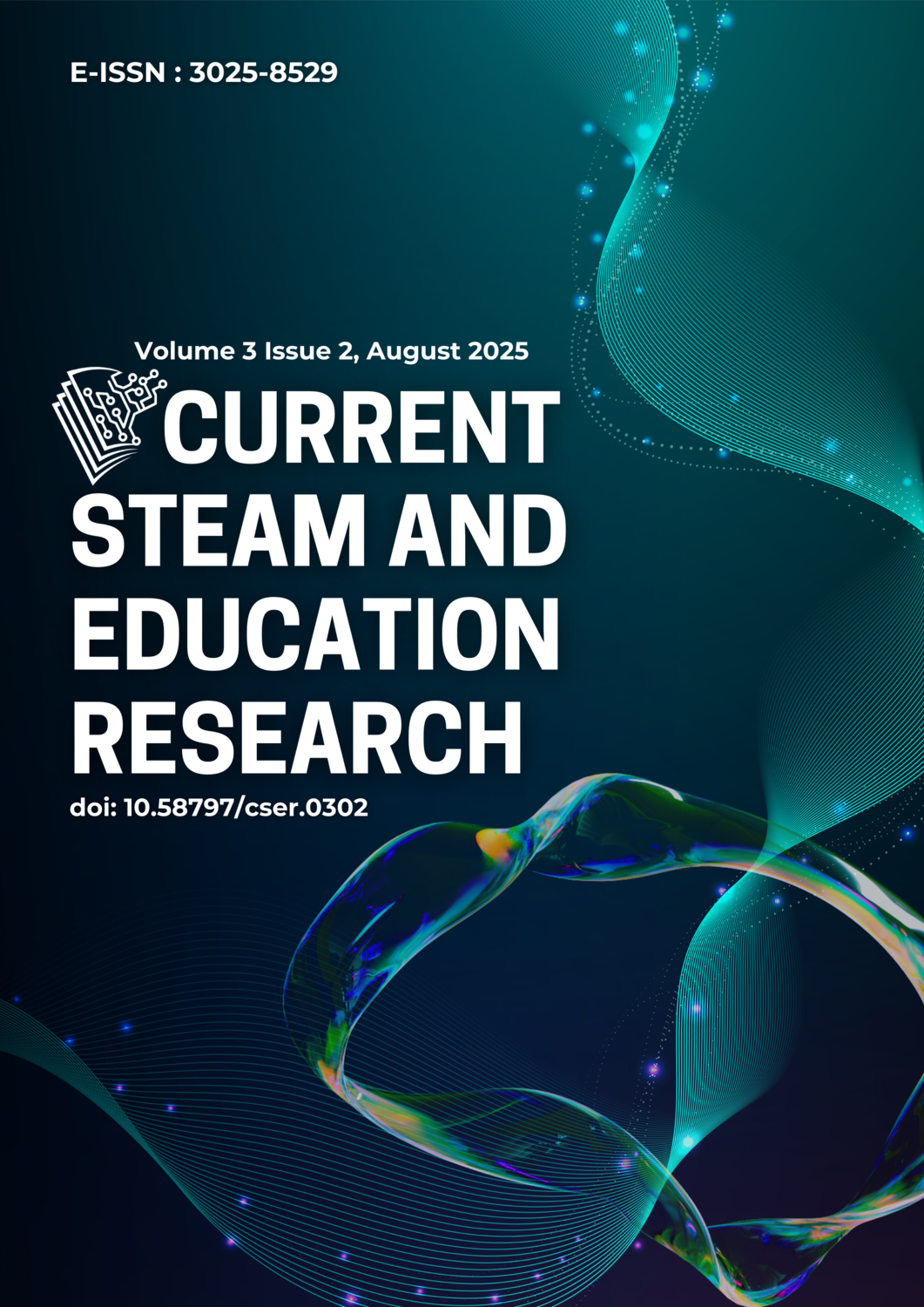Development of a STEM-Based Circular Motion Module Integrated with the Engineering Design Process
DOI:
https://doi.org/10.58797/cser.030201Keywords:
circular motion, engineering design process, module, STEMAbstract
The low mathematics literacy and science skills of Indonesian students can be caused by among other, the lack of learning media that can improve students’ conceptual understanding, especially in physics. The STEM approach and the Engineering Design Process (EDP) methods can improve problem-solving and creative thinking skills. Therefore, this study aims to develop learning media with the STEM approach and the Engineering Design Process method for Physics subject, namely Circular Motion. The method used in this study is Research and Development with the ADDIE development model, which is limited to: 1) Analysis, 2) Design, 3) Development. The design and development stage involved material and learning experts to test the feasibility of the developed module. The average value of material feasibility of the module is 85.00% with the category “feasible and can be used with minor revisions.” While the average value of learning feasibility is 87.00% with the category “very feasible and can be used without revision”. The result of this study is expected to be the basis for the development of other learning media based on STEM and EDP syntax to improve students’ skills.
References
Banda, H. J., & Nzabahimana, J. (2022). The Impact of Physics Education Technology (PhET) Interactive Simulation-Based Learning on Motivation and Academic Achievement Among Malawian Physics Students. Journal of Science Education and Technology, 32(1), 127–141. https://doi.org/10.1007/s10956-022-10010-3
Bouchée, T., de Putter - Smits, L., Thurlings, M., & Pepin, B. (2021). Towards a better understanding of conceptual difficulties in introductory quantum physics courses. Studies in Science Education, 58(2), 1–20. https://doi.org/10.1080/03057267.2021.1963579
Brakhage, H., Gröschner, A., Gläser-Zikuda, M., & Hagenauer, G. (2023). Fostering Students’ Situational Interest in Physics: Results from a Classroom-Based Intervention Study. Research in Science Education, 53(5). https://doi.org/10.1007/s11165-023-10120-x
Carrete-Marín, N., Domingo-Peñafiel, L., & Simó-Gil, N. (2024). Teaching materials for rural schools: challenges and practical considerations from an international perspective. International Journal of Educational Research Open, 7, 100365–100365. https://doi.org/10.1016/j.ijedro.2024.100365
Chang, D., Hwang, G.-J., Chang, S.-C., & Wang, S.-Y. (2021). Promoting students’ cross-disciplinary performance and higher order thinking: a peer assessment-facilitated STEM approach in a mathematics course. Educational Technology Research and Development, 69(6), 3281–3306. https://doi.org/10.1007/s11423-021-10062-z
Chen, P., & Chan, Y.-C. (2021). Enhancing Creative Problem Solving in Postgraduate Courses of Education Management Using Project-Based Learning. International Journal of Higher Education, 10(6), 11. https://doi.org/10.5430/ijhe.v10n6p11
De Loof, H., Boeve-de Pauw, J., & Van Petegem, P. (2021). Engaging Students with Integrated STEM Education: a Happy Marriage or a Failed Engagement? International Journal of Science and Mathematics Education, 20(7). https://doi.org/10.1007/s10763-021-10159-0
Fan, S.-C., Yu, K.-C., & Lin, K.-Y. (2020). A Framework for Implementing an Engineering-Focused STEM Curriculum. International Journal of Science and Mathematics Education, 19(8). https://doi.org/10.1007/s10763-020-10129-y
Fang, N., & Guo, Y. (2022). Improving Student Learning of Impulse and Momentum in Particle Dynamics Through Computer Simulation and Animation. Journal of Educational Computing Research, 60(8), 073563312210969. https://doi.org/10.1177/07356331221096979
Galanti, T. M., & Holincheck, N. M. (2024). Integrating computational thinking in elementary STEM using the engineering design process. School Science and Mathematics, 124(4), 279–286. https://doi.org/10.1111/ssm.12638
Ho, S. K., & Gan, Z. (2023). Instructional practices and students’ reading performance: a comparative study of 10 top performing regions in PISA 2018. Language Testing in Asia, 13(1). https://doi.org/10.1186/s40468-023-00261-1
Hwang, W.-Y., Purba, S. W. D., Bao, S.-J., & Ma, J.-H. (2022). Facilitating Physics Learning Using Ubiquitous-Physics App With Learning Guided Map (gMap) in Authentic Contexts. IEEE Transactions on Learning Technologies, 15(1), 93–106. https://doi.org/10.1109/tlt.2022.3155116
Morel, G. M. (2021). Student-centered learning: context needed. Educational Technology Research and Development, 69(1), 91–92. https://doi.org/10.1007/s11423-021-09951-0
Priemer, B., Eilerts, K., Filler, A., Pinkwart, N., Rösken-Winter, B., Tiemann, R., & Zu Belzen, A. U. (2020). A framework to foster problem-solving in STEM and computing education. Research in Science & Technological Education, 38(1), 105–130. https://doi.org/10.1080/02635143.2019.1600490
Rozhenkova, V., Snow, L., Sato, B. K., Lo , S. M., & Buswell , N. T. (2023). Limited or complete? Teaching and learning conceptions and instructional environments fostered by STEM teaching versus research faculty. ProQuest, 10(1), 51. https://doi.org/10.1186/s40594-023-00440-9
Siller, H.-S., Vorhölter, K., & Just, J. (2024). Problem Posing as a Way of Promoting Individual Mathematical Thinking in STEM Contexts – The Case of Climate Change. International Journal of Science and Mathematics Education. https://doi.org/10.1007/s10763-024-10518-7
Tong, T., Pi, F., Zheng, S., Zhong, Y., Lin, X., & Wei, Y. (2024). Exploring the Effect of Mathematics Skills on Student Performance in Physics Problem-Solving: A Structural Equation Modeling Analysis. Research in Science Education. https://doi.org/10.1007/s11165-024-10201-5
Downloads
Published
How to Cite
Issue
Section
License
Copyright (c) 2025 Raffa Fitra Ramadannisa, Nurul Chandra Amelia, Firda Rulifiangga, Widayani Widayani, Triyanta Triyanta

This work is licensed under a Creative Commons Attribution 4.0 International License.
